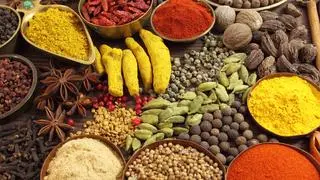With its share in the smart phone market being hit globally as well as in India, Nokia is banking on its Windows-enabled handsets – Lumia - to put up a good show against Google's Android and Apple's iOS. Whether Lumia will strike a chord with consumers will be known only in December when the phones arrive in the market.
Speaking on the sidelines of a seminar organised by the IIM Calcutta, Mr D. Shivakumar, Vice-President and MD (markets), Nokia India, who received a ‘distinguished alumnus' award from the institute, explains why Lumia is different from other similar handsets of its competitiors, the pricing strategy and the company's dual SIM offerings.
Below are the excerpts of the interview:
Nokia's latest offering, Lumia, comes at a time when some of its rivals have already launched Windows-enabled handsets. How different would Nokia's offerings be?
The whole concept of any mobile is the applied integration of hardware, software and service. We mentioned in February 2011 when we started our journey that Windows will be our primary operating system. The point of differentiation is user interface, application from the developer experience and finally is the point of purchase experience. In all these three Nokia has an advantage.
In terms of services, this phone has a Nokia Drive that this not available in any other platform. It's a voice-led turn-by-turn navigation. It is available in 100 countries in 50 languages one of them being Hindi. The second is Nokia Music, which is available only in its Lumia range of handsets.
The other is application. One of them is the contacts transfer application where one can transfer any contact from any handset. And the second is apps highlight. We know the apps that a user likes and if he logs on and asks for an application then we will provide an app in the genre of his liking. It's unique to Nokia again. It's got Internet Explorer 9. In terms of range of applications we have 750 unique Indian apps, which no one has.
What would be the pricing in India?
At present, Lumia 800 is priced at $580 and Lumia 710 is $380. But what we have announced so far is the global price and these are without local taxes, currency fluctuations and subsidies.
This (Lumia) is Nokia's biggest launch in terms of marketing investments. Do you have a plan B in case this doesn't work out as expected?
Our plan B is our plan A.
In terms of new offerings, Nokia has come out with a bouquet of dual-SIM enabled phones. How are you consolidating its presence in the segment which has seen the highest growth?
Yes. Dual SIM is here to stay in India. We have come in late in the market but we have come in with the relevant innovations in the market and have not just come offering dual SIM handsets. Besides easy swap, we have also come out with toggling and the five number (SIM) identification process in our handsets.
What we have also done is segmented the market by saying that this is the dual SIM with best music facilities or internet penetration. So apart from innovating, we have also segmented the market. And this has led to the success of our dual SIM offerings.
We have focussed distribution across the length and breadth of the country and across various price points. All our results and strategy have been very encouraging.
What are your new offerings in the dual SIM segment?
You will see that with the ‘Asha' range (of handsets). This is the next step and it will have even better internet connectivity. We have announced the launch of those phones in October and you will see them in the market in a couple of weeks.
What are the company's plans on using the NFC (near field communication) ecosystem that the company has developed during the Ra.One days? Will that platform be used for future devices?
NFC is a new technology and it started in 2003. Three companies which formed a consortium to drive the NFC were Nokia, Philips and Sony. Now the NFC forum has more than a 1,000 members and standard guidelines. It has always been seen as something for banking, identification, etc.
But I believe in markets like India or in other markets where there is high piracy, NFC is a very viable way of monetising. Hence, when we did NFC we tied up with Ra.One . We coined an expression “just tap” because in all our consumer experience what came up was that consumers were excited with the facility of “just tap.” I believe that it is a new way of looking at NFC.








Comments
Comments have to be in English, and in full sentences. They cannot be abusive or personal. Please abide by our community guidelines for posting your comments.
We have migrated to a new commenting platform. If you are already a registered user of TheHindu Businessline and logged in, you may continue to engage with our articles. If you do not have an account please register and login to post comments. Users can access their older comments by logging into their accounts on Vuukle.